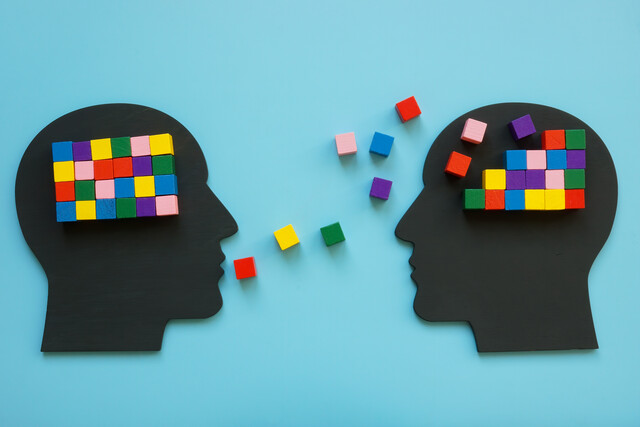Antiaging Trends
The growing affordability of cosmetic procedures performed around the United States is encouraging more consumers to rely on quick fixes than ever before. 21st-century consumers are flocking to plastic surgery offices to repair the destruction caused by extreme overexposure to the sun, the results of obesity, and general poor nutrition.
Plastic surgery and cosmetic surgical procedures used to be limited to the over 50-year-old set, but today, young adults in their 20s and 30s are hoarding savings accounts in order to enjoy the services of plastic surgeons to get "a nip here and a tuck there".
However, consumers are not always aware of the limitations of plastic or cosmetic surgeries when it comes to providing antiaging benefits. The old saying, "beauty is only skin deep" is very true. While a person may enhance their looks and erase some of the signs of aging on the surface as a result of plastic surgery or cosmetic surgical procedures, these procedures do nothing for the health and vitality of internal organs.
Facelifts will not stop the aging process. Traditionally, a facelift will last about ten years, perhaps less depending on age, the quality of the skin, exposure to sun, and even smoking and lifestyle habits.
Liposuction procedures may literally suck the fat from hips, bellies, thighs, buttocks, abdomens and arms of many individuals, but fails to address the need for proper exercise and nutrition to maintain overall health and vigor.
In addition to costing consumers millions of dollars, these 'quick fix' techniques and trends do nothing to encourage healthy lifestyles, adequate and balanced nutrition or exercise in those utilizing the services. More often than not these days, those undergoing extreme surgical facelifts and procedures often end up with unsatisfactory results. Even worse, in a matter of years, they are right back where they started or worse.
A study conducted by Gallup and Allergan, manufacturers of Botox, supports the belief that a growing trend for such noninvasive procedures and fillers that last longer and cost less are growing increasingly popular. And why now, when these drugs are being touted as "miracle drugs"? The increasing public demand for Botox injections is becoming as common as going to get a manicure or pedicure for many of societies younger generations.
Such procedures are even becoming commonplace in many medical spas around the country. The increase in the variety and the availability of such antiaging skin care maintenance is adding to the popularity of noninvasive skin tightening treatments, and such drugs as Botox and Restylane are becoming commonplace in doctor's offices and spas. The claims of "lifting" sagging skin, filling in wrinkles, and firming jaw lines nevertheless fails to produce permanent and long-term results.
Medical studies reaffirm that signs of aging first become noticeable when we are in our 20s. While the rate at which we age may be genetic to a certain degree, individual lifestyle habits also play an important role in how fast or slow a particular individual will start to show signs of cell degeneration. For example, a person who avoids excessive overexposure to sunlight, such as sunbathing, will naturally have more youthful looking skin than someone who spends five hours a day baking in the sunshine.
Despite the popularity of plastic and cosmetic surgical procedures and techniques to offering a more youthful appearance, plastic surgeons, scientists, doctors and dermatologists all agree that nutritional ingredients such as vitamins and minerals significantly help to reverse the signs of aging as well as to slow down the aging process in many individuals.
The best cosmetics that actually perform as antiaging products should include at least some of the following ingredients:
|
Vitamin A (retinol) Vitamin C Vitamin E Alpha hydroxy acids Glycolic acid |
Vitamin A helps to rebuild collagen fiber within the skin. It is also an excellent exfoliant that helps to rid the skin of dead skin cells and encourage new skin cell regrowth. Vitamin A, also commonly known as retinol , is one of the main ingredients necessary to minimize the appearance of fine wrinkles and lines. Vitamin C is also known as ascorbic acid . It stabilizes collagen, is excellent for healing wounds, and is one of the best anti-oxidants that a person can find. Vitamin C has the ability to heal sun-damaged skin and reduce the appearance of fine lines and wrinkles.
Vitamin E is also an antioxidant that improves moisture on the surface of the skin, which is essential for smoothness and softness. Alpha hydroxy acids improve skin texture tone and help cleanse pores and smooth surface wrinkles and fine lines. Glycolic acid triggers cells to create collagen, which helps to plump up cells in the skin that helps to reduce the appearance of wrinkles on the surface of the skin.
Any antiaging product sold in pharmacies that does not contain retinol or retinol derivatives is not going to produce the same results as one that does. Unfortunately, many consumers are unaware of the vital importance of many basic vitamins, minerals, and acids that are essential for youthful looking skin.
Engaging in regular exercise, following a proper diet, and taking care of the skin are some of the best ways in which every individual may slow down the aging process and maintain a more youthful appearance well into his or her senior years.
Maintaining a Healthy Weight
Learning how to adequately balance our daily lifestyle to incorporate healthy eating, physical fitness, and emotional well-being is not always easy, but they can be achieved with a little bit of extra diligence and determination. Doing so helps to increase not only quality of life, but also length of life. Maintaining a healthy weight is one of the best ways a person may help extend his or her life by many years.
We are not going to get into an extremely involved discussion of anatomy and physiology in this section, but students should be familiar with terms and processes to determine ideal weight as well as body mass and ratios between fat and muscle.
Depending on hereditary, genetics, and height, body mass will determine what should be healthy weight maintenance goal ranges. Generally, a healthy body mass index rating of between 20 and 25 is considered ideal, while those higher are considered to be at a higher general risk for medical problems and diseases.
Obesity is a growing problem in the United States, one that over millions of adults suffer from today. Recent studies show that nearly 60 million Americans are overweight and another 25% of the United States population is obese. Before you think that's not so bad, remember that those statistics don't include children or teenagers.
Extra weight may cause cumulative effects on the body that cause a multitude of illnesses and diseases including but not limited to:
-
Diabetes
-
High blood pressure
-
Cardiovascular disease
-
Arthritis
-
Strokes
Obesity has been linked to the development of many cancers, including but not limited to breast cancer, and cancers of the colon, esophagus, and kidneys. A staggering 42% of individuals diagnosed with colon or breast cancers are considered obese and 30% of surgeries involving the gallbladders are a direct result of obesity.
To put in perspective, think about it this way. Nearly thirty illnesses and diseases are directly linked or associated with being overweight. The American Medical Association has determined that obesity is now the leading, though preventable, cause of death in the United States, second only to smoking.
However, through diligence and determination, nearly every individual is able to lose weight, either by him or herself or through the help of support groups, and for the very obese, through medical procedures that shrink the stomach.
In addition, to maintain optimal health, individuals should cut down or refrain entirely from smoking, which also leads to a multitude of medical conditions and diseases that may shorten life spans.
Now, take a look at your belly. Is it flat or round? The most dangerous form of fat, and one that leads to most health concerns is called "belly fat", or visceral fat , the fat that accumulates around organs in the abdomen, which are directly linked to more health-related issues. The type of fat that are found in the thighs and buttocks is more commonly known as subcutaneous fat . While it's an obnoxious presence for many, it's generally not life-threatening like visceral fat may be.
The average ideal waist measurement for women is 35 inches or less. For men, it's 40 inches or less. The most commonly used and accurate instrument to determine and measure body fat is called a caliper . By taking measurements on the back of the arm, or triceps, the abdomen and upper thigh, the caliper pinches and measures the amount of subcutaneous body fat found at these points on the body and is used in a formula that calculates overall body fat. Keep in mind that because humans do this test, there may be a 3 to 5% discrepancy in measurements due to human error.
There are several other methods used to determine overall body fat, though most are expensive, including:
-
Hydrostatic (underwater) weighing
-
Bod Pods
-
Bioelectrical Impedance
-
Dual x-ray absorptiometry
Maintaining Healthy Balances
Find sports, exercises or activities that motivate you as well as meet your health needs. Determine how much money you want to spend on your exercise routines and whether you have alternative resources. Finding the time to take care of your physical needs is not always easy, but scheduling an exercise routine around work or home obligations will provide benefits not only in your physical well-being, but also in your emotional state and your mental acuity.
Maintaining a healthy weight means eating healthy. That doesn't mean that you can never have another piece of chocolate cake or strawberry ice cream with all the goodies added to it. It just means maintaining good nutrition and daily exercise on a day-by-day basis and making better choices when it comes to food.
The brain has the capacity to continue learning well into the 70s, 80s, and 90s. While it may take a little longer, a 90-year-old is just as capable of learning new information as a 20-year-old.
Keeping the brain young helps to prevent age-related memory loss often associated with aging. Exercising the mind means keeping it stimulated through a variety of activities such as learning to play a new musical instrument, studying a new language or subject, engaging in board games as well as crossword puzzles and other activities that stimulate the thinking process. Studies have also shown that individuals who socialize with family and friends are more active, both physically and mentally, than those who don't.
Regular exercise improves blood flow to every cell in the human body, and those include the cells that make up the brain. A mere 45 minutes of exercise three times a week has been shown to reduce the number of age-related issues in cognitive abilities in those over 50 years old.
The saying, "you can't teach an old dog new tricks," is not at all true when it comes to stimulating older minds. On the contrary, the saying, "use it or lose it," is quite true.



























